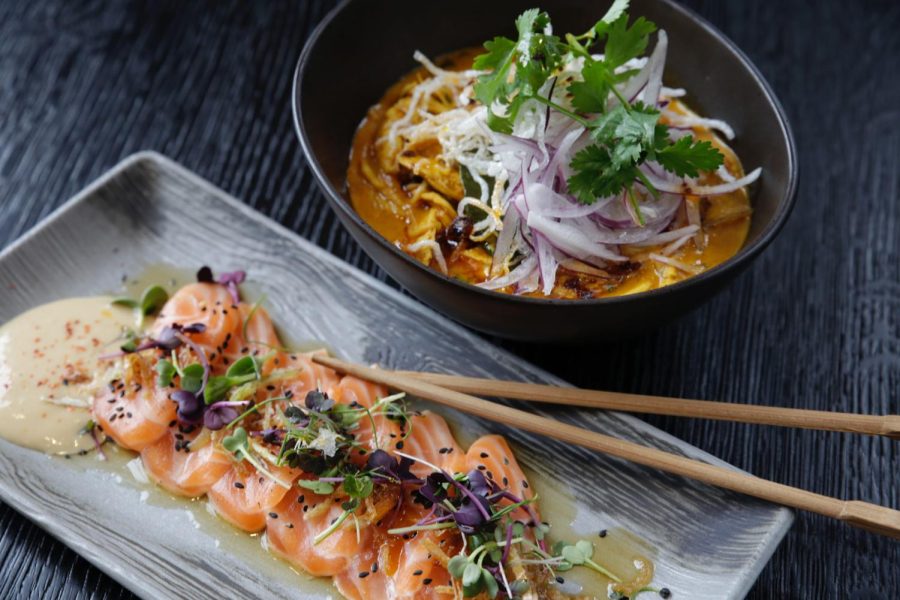Why Asian food beats all the rest
May 19, 2021
Asian cuisine is one of, if not the best, types of food out there.
Food appeals to people in all kinds of ways. Assaggio Boston, a highly rated Italian restaurant on OpenTable, says, “Food presentation is the key to pulling all five senses into the experience of eating. Hear the food being cooked, smell the ingredients, enjoy the texture as you eat, create an unforgettable taste, and of course, visually taste the food before it ever hits your tongue.”
By this definition, what is most important about food is what we can detect using our five senses: touch, taste, smell, hearing and sight. Asian food can easily cover all of the mentioned senses as well as brag about an abundance of health benefits.
One of the first things noticeable about cooking is the smell of the food. Asian cuisine is full of spices and fragrant scents that can fill up a room.
Take, for example, the slightly nutty aroma of toasted sesame seed oil, or the salty savory scent of oyster sauce or soy sauce. Even sweets bring their own fragrance in the form of ripe or dried fruit such as the coconut scent accompanying Vietnamese sweet rice.
The sounds of cooking are also appealing with the hot splashes of sizzling oil from stir frys and the steady sounds of knives mincing through garlic or ginger.
In terms of sight, Asian food is far from lacking as many dishes display a glistening array of meats and vibrant vegetables topping rice or noodles. Colors are often present in the food in the form of the ingredients themselves or the rich sauces that coat them and add flavor.
Outside of the food itself, the dishes used to serve the food will commonly have designs of flowers, or bright colors to create a more striking contrast against the food. Some Asian dishes, like the century egg, may seem a little too exotic to try but the flavor generally bridges any gaps in appearance.
Touch is something that doesn’t seem related to food as much as a lot of Asian food is picked up with chopsticks; however, there are dishes that are eaten with the hands. In Indian cuisine, it is not uncommon to scoop one’s food up with a piece of naan rather than any utensils.

Food Republic says, “Hand-to-mouth eating is still a very real custom in parts of Asia, the Middle East and Africa.” Even outside of countries like India, there are other finger foods such as egg rolls and onigiri.
Touch is something you experience with food when you put it in your mouth as well in the form of texture. There is such a diversity of dishes, you will never be lacking in different textures while eating.
Finally, taste is still the most important factor. While taste is largely up to the individual, there are flavors galore in Asian cuisine.
There are salty dishes as well as savory, sweet, sour, spicy and some that mix a variety of flavors such as Thai sweet and sour pineapple chicken.
For the spice lovers, there are dishes that range from a warmth in your mouth to food so hot that there are warnings on the menu. Each county has varying styles and tastes as well so there are plenty of options to try if you prefer one flavor to another.
Ingredients also play a critical role in the healthy nature of Asian cooking. While flavors aren’t exactly the same across Asia, there are some ingredients used in several places such as ginger, curry paste, soy sauce, rice wine, lime and several others according to Kitchn.
Ginger has long been known to have medicinal benefits according to Healthline and foods like curry that use a lot of spices like turmeric also have a series of health benefits. The large amount of vegetables used in everyday cooking are also ideal for anyone looking to up their vegetable intake.
All things considered, Asian food meets and exceeds all of the sense standards and is healthy to boot, making it the best food across the board.

